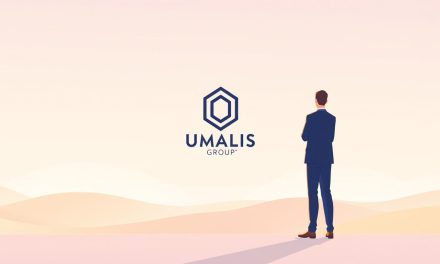When Marie took on a tight freelance assignment in Paris, she felt the usual rush: limited time, high expectations, and many unknowns. She used a simple, structured approach and a few reliable tools to align scope, timeline, and stakeholders.
That clarity made communication calm and predictable. Her clients saw steady progress and trust grew.
This article helps independent professionals like Marie adopt methods that protect time and deliver results. You will learn practical steps and the five-phase life cycle so you can place each task in context.
Expect concise guidance on planning, risk reduction, and how small governance habits improve client relationships. We focus on usable best practices that let a project manager tailor rigor to the size and uncertainty of an engagement.
Table of Contents
Key Takeaways
- Structured methods bring calm and clearer delivery for independent professionals.
- Treat every assignment as a temporary endeavor with a unique outcome.
- Understand the five-phase life cycle to spot where you are and what’s next.
- Simple tools and governance habits reduce risk and boost client trust.
- Tailor best practices so the approach supports your work, not the reverse.
Why project management matters for independent professionals
A simple structure turns variable demand into predictable delivery for freelancers.
In today’s fast-paced market, teams and solo consultants must close gaps between intent and delivery. Organizations that adopt sound project management practices report a 92% success rate in meeting objectives. This shows structure pays off.
We connect practical methods to your daily reality: irregular workload, limited resources, and the need to prove progress to clients. Clear scoping and milestone planning protect margins and cut the risk of unpaid rework.
Regular updates anchor conversations with stakeholders and stop small issues from becoming crises. A steady cadence makes your progress visible and enables proactive choices.
| Benefit | Effect for independents | Why it matters |
|---|---|---|
| Right-sized planning | Faster estimates and smoother handoffs | Reduces onboarding time and confusion |
| Risk checks | Fewer surprises, protected reputation | Maintains client trust under tight timelines |
| Repeatable approach | Consistent pace, less burnout | Supports sustainable growth and quality |
For a practical starter approach, see our strategic guide that aligns planning, resources, and client expectations.
What is project management? Definitions, goals, and constraints
Defining aims and limits early keeps delivery predictable and conversations factual.
Project management is the coordinated use of skills, methods, and tools to reach a defined objective within agreed limits.
The Project Management Institute (PMI) defines a project as a temporary endeavor that creates a unique result. The PMBOK Guide frames success around three primary constraints: scope, time, and budget.
How these constraints interact matters:
- Expanding scope usually increases time and budget needs.
- Compressing time often requires more resources or reduced scope.
- Clear acceptance criteria keep stakeholders aligned and reduce disputes.
Projects are temporary and unique; operations are ongoing and repeatable. Naming assumptions and tracing them to deliverables creates a measurable baseline you can track.
We recommend using the formal definitions from the Project Management Institute to support transparent conversations. Agreed constraints act as decision guides—not rigid cages—so you can trade off scope, time, and budget with confidence.
The project management life cycle at a glance
A simple life-cycle map makes it easy to locate work, risk, and required approvals.
Initiation
Set the vision, secure approval, and create a charter. This step defines the why and who.
Planning
Build a roadmap: scope, schedule, WBS, and a risk register. A clear plan reduces guesswork.
Execution
Deliverables are built and validated. Use regular demos and checkpoints to show progress.
Monitoring and control
Track variance, handle change requests, and keep stakeholders informed. Monitoring spans the entire life cycle.
Closure
Validate outcomes, hand off deliverables, and capture lessons learned for future engagements.
- Outputs feed inputs: each phase hands off artifacts that reduce rework.
- Phase gates and acceptance criteria protect time and budget before major effort.
- Right-size the rigor: match documentation and reviews to complexity.
We use this five-step map as a supportive structure. It keeps your work visible while remaining adaptable.
Initiation: set the vision, scope, and stakeholder alignment
Begin with a concise statement that explains the problem you will solve and the value you intend to deliver.
Write a short vision and a one-paragraph problem statement. This aligns expectations for the sanctioning stakeholders and gives the project a clear purpose without diving into detail.
Define high-level scope and constraints. Capture what is in and out so you avoid confusion later. Note initial assumptions, risks, and a simple timeline to guide approvals.
- Identify key stakeholders and map their interests.
- Draft a concise charter with objectives and success metrics.
- Frame trade-offs between scope, time, and budget.
- Hold a short kickoff to set roles and decision rights for the project team.
| Artifact | Owner | Purpose |
|---|---|---|
| Vision & Problem Statement | Project sponsor | Align stakeholders quickly |
| Charter | Project manager | Record objectives, risks, and acceptance |
| Initial Feasibility Notes | Lead analyst | Validate dependencies and critical tasks |
Position benefits clearly so decision-makers can greenlight work with confidence. For a deeper dive on stakeholder engagement, see our stakeholder engagement guide.
Planning: build a realistic plan within scope, time, and budget
Good planning turns a charter into a step-by-step roadmap with visible priorities.
Scope, deliverables, milestones, and dependencies
We translate the charter into a detailed breakdown of deliverables and acceptance criteria. Sequence milestones so the critical path is visible.
Use a baseline schedule and, when helpful, visualize it with gantt charts to make the project timeline easy to share.
Risk identification, resources, and success metrics
Identify risks early, assign owners, and define responses. Allocate resources by skill and capacity to avoid bottlenecks.
Define measurable success metrics for quality, schedule, budget, and outcomes. Capture assumptions and design a simple change control process.
« Planning is the act of turning intent into a sequence of decisions that reduce uncertainty. »
| Element | Action | Benefit |
|---|---|---|
| Scope & Deliverables | Breakdown + acceptance criteria | Clear handoffs, fewer surprises |
| Schedule | Baseline + Gantt view | Visible timeline and buffers |
| Risks & Resources | Owner, mitigation, skill allocation | Faster response, balanced workload |
Document the plan so the team and stakeholders share one source of truth. For tools that help with practical planning and timelines, see our tool mastery guide.
Execution: coordinate the project team and deliver value
Execution is where plans meet reality and teams convert intent into measurable outcomes.
We focus on turning plans into tangible outputs by coordinating the project team and stakeholders. Your role as a manager is to keep work visible, remove blockers, and protect the baseline.
Run short, efficient ceremonies—stand-ups, demos, and reviews—to keep tasks flowing and surface risks fast.
- Align priorities so each team member knows deliverables, deadlines, and handoffs.
- Use collaboration tools to centralize communication, files, and decisions for transparency.
- Give stakeholders concise updates tied to milestones so progress stays trusted.
Resolve blockers quickly by escalating when needed and reallocating work to maintain momentum. Track quality at the source with checklists, peer reviews, and a clear definition of done.
| Action | Tool | Benefit |
|---|---|---|
| Daily stand-up | Messaging hub | Faster issue detection |
| Demo & review | Shared workspace | Early validation |
| Change request | Approval log | Baseline protection |
We balance speed and rigor so outcomes deliver client value without compromising commitments. This keeps your teams efficient and stakeholders confident in progress.
Monitoring and control: track progress and manage change
Keeping sight of the baseline helps you spot drift before it affects delivery.
Monitoring evaluates progress against milestones and KPIs so you can act early.
We use practical metrics—milestone attainment, burn-up/burn-down, and Earned Value—to quantify progress credibly.
Earned Value for cost and schedule visibility
Earned Value shows work and cost together. Track Planned Value (PV), Earned Value (EV), and Actual Cost (AC).
From those we derive Schedule Variance and Cost Variance, plus performance indexes that reveal where time or budget slip exists.
- Compare actuals to baseline so scope, time, or cost deviations surface fast.
- Use lightweight dashboards that show status, risks, and decisions for stakeholders.
- Keep requirements traceable so every change maps back to business goals.
Variance analysis identifies root causes and guides corrective or preventive actions. Apply structured change control to evaluate impact, update baselines, and communicate decisions transparently.
Finally, manage vendor and dependency risks with clear contingencies and document lessons in-flight so improvements help the remainder of the engagement.
Closure: handoff, lessons learned, and benefits realization
A strong close protects outcomes and leaves clients ready to use what you delivered.
Confirm acceptance by mapping each deliverable to its acceptance criteria and collecting formal sign-off. Use a clear, dated record so obligations are unambiguous and traceable.
Transition knowledge with concise guides, short training sessions, and a support handover. This preserves progress and reduces post-close questions.
- Run a structured retrospective that captures lessons across process, tools, and collaboration.
- Validate benefits by comparing expected outcomes to early indicators and scheduling follow-up checks.
- Archive artifacts, finalize invoices, and close contracts to limit residual risk.
| Activity | Purpose | Owner |
|---|---|---|
| Sign-off ledger | Formal acceptance and audit trail | Delivery lead |
| Knowledge pack & training | Enable client autonomy and reduce support | Team lead |
| Retrospective report | Identify improvements and create templates | Facilitator |
| Benefits check-in | Measure early outcomes vs. expectations | Account owner |
Assign clear owners for remaining actions and close any open issues before formal archive. Acknowledge contributions to reinforce morale and client relations.
Convert insights into reusable checklists so your next engagement benefits from shorter ramp-up and fewer repeat errors. Communicate closure with a concise summary of value delivered and measurable results.
Choosing a methodology: Agile, Waterfall, Scrum, Kanban, PRINCE2, CPM
Your method shapes cadence, artifacts, and how quickly you learn from real feedback. Choose by assessing uncertainty, regulatory needs, stakeholder availability, and delivery cadence.
When Agile excels vs. when Waterfall fits best
Agile is iterative and ideal when requirements evolve. It delivers value in pieces and supports rapid feedback loops.
Waterfall suits well-defined goals and fixed requirements. Its sequential phases give predictability when change is costly.
Scrum ceremonies, roles, and sprint cadence
Scrum defines roles (Scrum Master, Product Owner), short sprints, and ceremonies: daily stand-ups, sprint planning, reviews, and retrospectives.
Use this when teams need clear rhythm and frequent validation of deliverables.
Kanban boards to visualize work-in-progress
Kanban boards make flow visible, limit WIP, and cut cycle time. They work well for continuous delivery and operational streams.
Critical Path Method for complex dependencies
CPM highlights critical and non-critical tasks and their dependencies. It is suited to large efforts with fixed deadlines.
- PRINCE2: stage gates, role clarity, and product-based planning for controlled environments.
- Hybrid: combine agile project management practices with stage gates when contracts or compliance demand it.
Project management tools and software to support your workflow
A well-chosen suite of digital tools keeps timelines, files, and conversations in one reliable place.
Start by grouping tools into clear categories: planning and scheduling, collaboration and documentation, issue tracking, and reporting/analytics. This helps you avoid overlap and shadow systems.
Consolidation matters: a single hub consolidates timelines, tasks, files, and chats so teams see progress without chasing updates. Confluence is useful as a content hub for decision logs, specs, and stakeholder alignment.
Choose by: ease of use, integrations, cost, permissions, and mobile access. Prefer solutions that offer templates for charters, RAID logs, and status reports to cut ramp time.
- Standardize views — boards, lists, calendars — so clients and teams follow the same picture.
- Use automation for reminders, dependencies, and recurring tasks to reduce manual error.
- Keep data tidy with naming conventions, tags, and regular archival.
Design a minimal tool stack that scales from solo work to multi-partner collaboration and read our guide for freelancers on freelance management to align tools with your workflow.
Roles and responsibilities: project manager and team members
Clear role definitions stop overlap and keep work moving forward.
The core remit of the project manager is delivery ownership from initiation through closure. They assign tasks, track scope, oversee budget and timeline, and run reviews that hand work to users.
Responsibilities map to planning, execution, monitoring, and stakeholder communication. We recommend short decision rights and a simple RACI to show who approves, who does, and who advises.
Essential skills include leadership, clear communication, risk and financial oversight, scheduling, and tool proficiency. Cultivate these with focused training and brief coaching sessions.
| Role | Core Remit | Key Skills |
|---|---|---|
| Project manager | Delivery ownership, stakeholder updates | Leadership, scheduling, finance |
| Team members | Execute deliverables, quality checks | Technical skill, communication, accountability |
| Stakeholder / Sponsor | Approve scope, accept deliverables | Decision-making, strategic oversight |
Scale roles in small teams by combining duties, keeping norms for responsiveness, documentation, and quality checks. Create a short role charter to anchor accountability and build trust across the team.
Project planning essentials: timeline, Gantt charts, and Kanban boards

Visual tools turn plans into visible commitments that teams can follow.
Gantt charts visualize schedules and dependencies. Use them when many tasks link across long critical paths. They show phases, milestones, and the critical path so dates and handoffs stay clear.
Kanban boards promote flow. Columns make status visible, limit work-in-progress, and reveal bottlenecks fast. Use boards for continuous delivery or when teams need fast task cycles.
Structure a clear project timeline with phases, milestone dates, and dependencies. Translate deliverables into short tasks with a definition of done and simple acceptance criteria to reduce ambiguity.
Align planning views to your audience. Sponsors need a high-level timeline. Executors need daily task views and due dates. Connect boards and timelines by linking due dates and dependencies so neither drifts from reality.
- Keep documentation minimal: a timeline, task list, and one risk note.
- Adopt a light review cadence—weekly status and a short monthly checkpoint.
- Tie visuals to actual progress with status updates and quick demos.
For a practical template that helps structure timelines and tasks, see our timeline checklist. We recommend starting small and adapting tools as complexity grows.
Risk, resources, and budget: manage constraints proactively
A pragmatic view of threats and capacity keeps commitments realistic.
We establish simple steps to spot, assess, and respond to risk before it affects delivery. Use a lightweight RAID log to record risks, assumptions, issues, and dependencies. Update it weekly so the team and stakeholders see what matters.
Resource planning respects availability, skills, and cost. Track utilization and progress with short capacity checks to avoid overallocation and burnout. Forecast upcoming needs across milestones so you can hire or reassign in time.
Build a working budget that includes contingency and traceable change impacts. Set escalation thresholds and triggers so deviations prompt action before they become material.
- Trade-offs: scope, time, and budget interact—document choices and get stakeholder consent.
- Vendor risk: use clear SLAs and contingency steps in contracts.
- Governance: match scrutiny to uncertainty; tighten reviews when stakes rise.
« Prepare for likely issues, and you reduce the chance of costly surprises. »
Stakeholder communication and governance best practices
A simple communication rhythm saves time and prevents repeated clarifications.
Start with a short communication plan that names audiences, channels, frequency, and content owners. Keep it actionable: sponsors get high-level outcomes; delivery teams receive detailed tasks and dates.
Run concise status reviews using consistent metrics and a clear ask for decision-makers. Timebox meetings and share a one-page agenda before each check-in.
- Document decisions and assumptions so future conversations stay focused.
- Scale governance from quick checkpoints to a steering committee when complexity grows.
- Define escalation paths with thresholds, owners, and timelines for resolution.
| Audience | Channel | Frequency | Owner |
|---|---|---|---|
| Sponsors | Executive summary + demo | Monthly | Account lead |
| Delivery teams | Task board + stand-up notes | Daily/Weekly | Team lead |
| External partners | Shared reports + calls | Bi-weekly | Integration owner |
Use visuals and short demos to make progress tangible without adding noise. Align governance to your chosen methodology so accountability fits the work and avoids unnecessary ceremony.
From theory to practice: real-world examples across industries
Real-world examples reveal which habits make delivery resilient under pressure.
Heathrow Terminal renovation: delivery on time and within budget
David Buisson, PMP, led the Terminal 1 renovation in 2005. Faced with asbestos and uneven floors, the team used PMBOK-aligned governance to protect safety and schedule.
Clear risk logs, phased approvals, and frequent stakeholder briefings kept the live terminal operational and the work within budget.
Global vaccine rollout: adapting to uncertainty at scale
The Oxford–AstraZeneca effort delivered over one billion doses to 170+ countries. Cross-functional coordination and disciplined logistics enabled rapid adaptation under shifting supply constraints.
Short decision cycles and transparent metrics maintained steady progress across diverse teams.
Mars Pathfinder: faster, better, cheaper with award-winning results
Mars Pathfinder finished under $150M in 36 months and later won the PMI Project of the Year. Its emphasis on clear constraints and iterative testing met time goals and scientific aims.
- Repeatable lessons: define constraints, use phased control, keep issue logs, and apply change control.
- Leadership that blends rigor and flexibility sustains outcomes.
Project management templates and checklists to get started

A small set of clear forms helps teams start fast and avoid common omissions.
We provide a starter kit with essential templates: a charter, WBS, schedule, risk register, communication plan, and a concise status report. Use these to set scope, mark milestones, and assign tasks quickly.
Checklists for each life cycle phase keep consistency throughout project work. Include a kickoff agenda that aligns roles and ways of working with team members and stakeholders.
- Lightweight RAID and decision logs retain context and speed onboarding midstream.
- A change request form captures impact on scope, time, and budget before approval.
- A closure checklist ensures sign-off, documentation handover, and benefits follow-up.
Centralize templates in Confluence or your chosen hub so the team always uses the latest version. Apply simple versioning and naming conventions to keep artifacts traceable and tidy.
Adapt the level of detail to fit size and risk so your management approach stays useful, not burdensome. With these templates and project management tools in place, you reduce omissions and deliver steadier results.
Conclusion
A clear rhythm of steps and simple tools turns uncertainty into steady, deliverable progress.
We advocate a disciplined yet flexible approach to project management that gives independent professionals control and confidence. You leave with a concise roadmap across initiation, planning, execution, monitoring and closure.
Choose methods by context and balance rigor with adaptability so your projects move forward without excess bureaucracy. Prioritize communication, transparency, and short governance habits to keep stakeholders aligned.
Protect outcomes by managing risks, resources, and budget proactively. Adopt templates and checklists to speed setup and keep quality consistent. Iterate on lessons so each engagement reduces friction and increases value.
With these steps you can approach planning as a supportive structure, not unnecessary paperwork, and deliver work with a calm, professional cadence clients trust.
FAQ
What is the difference between a temporary initiative and ongoing operations?
Temporary initiatives have a defined start and finish and deliver a unique outcome, while operations are continuous activities that sustain an organization. Independent professionals often balance both by using clear deliverables and timelines for temporary work and standard procedures for recurring services.
How do scope, time, and budget interact as primary constraints?
These three constraints form a triangle: changing one affects the others. Expanding scope typically requires more time or funds. Shortening schedules may increase costs or reduce features. Successful leaders balance trade-offs and document decisions to keep commitments realistic.
When should I choose Agile over Waterfall?
Use Agile when requirements are uncertain, client feedback is frequent, or rapid iterations add value—common in software and creative services. Choose Waterfall for well-defined, sequential work with fixed requirements, such as regulatory deliverables or construction phases.
What roles do Scrum ceremonies and Kanban boards play in delivery?
Scrum ceremonies (sprint planning, daily stand-ups, reviews, retrospectives) create rhythm and continuous improvement. Kanban boards visualize work-in-progress, limit multitasking, and smooth flow. Both improve transparency and team focus when applied with clear rules.
How can Earned Value Management help with cost and schedule visibility?
Earned Value Management ties work progress to budget and time by comparing planned value, earned value, and actual cost. It highlights variances and trends early, enabling corrective actions to keep financials and timelines aligned.
What key elements should go into a realistic plan?
A realistic plan includes a defined scope, deliverables, milestones, task dependencies, resource assignments, risk register, and measurable success criteria. Use Gantt charts for timeline clarity and Kanban for team-level execution.
How do I identify and mitigate top risks effectively?
List potential threats, assess likelihood and impact, prioritize by severity, and assign owners with mitigation actions. Review risks regularly, update contingency plans, and allocate reserves for critical uncertainties.
What tools and software help independent professionals stay on track?
Common tools include Gantt-capable apps like Microsoft Project, collaborative platforms such as Asana and Trello, and integrated suites like Jira for Agile teams. Choose tools that match your workflow, support time tracking, and integrate with invoicing and communication systems.
How should roles and responsibilities be defined for small teams?
Define a single accountable lead, clear deliverable owners, and supporting contributors. Document responsibilities in a short RACI or roles list so each team member knows decision authority, execution tasks, and reporting expectations.
What are essential templates to start fast?
Useful templates include kickoff agendas, scope statements, risk registers, milestone Gantt charts, status-report formats, and lessons-learned checklists. Templates accelerate setup and ensure consistent governance across engagements.
How do I ensure successful handoff and benefits realization at close?
Plan handoff deliverables, train recipients, confirm acceptance criteria, and capture measurable benefits. Conduct a short lessons-learned session and archive key documents so value is sustained after the engagement ends.
Can the Critical Path Method help with complex dependencies?
Yes. CPM identifies the longest sequence of dependent tasks that determines the minimum completion time. Focusing on critical tasks helps prioritize resources and avoid schedule slippage in complex programs.
How do independent professionals communicate governance to stakeholders?
Use concise governance charters, regular status updates, clear escalation paths, and agreed decision gates. Consistent, transparent communication builds trust and reduces scope creep or misaligned expectations.
What real-world examples show effective delivery under constraints?
Large infrastructure refurbishments, global health rollouts, and aerospace missions demonstrate rigorous planning, adaptive risk management, and cross-team coordination. These examples highlight how governance, clear roles, and iterative control deliver outcomes on time and within budget.





